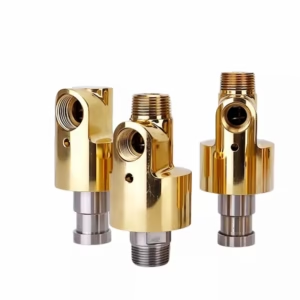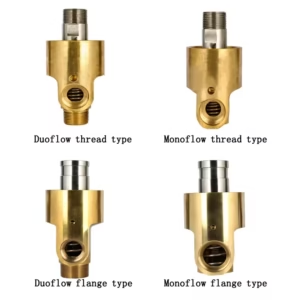HS Double Flow Dual Flow Rotating Joint
Original price was: $20.00.$15.00Current price is: $15.00.
- Product name: HS-G rotary joints
- Material: Stainless Steel Brass
- Pipe Clamp Size: 15/20/32/40/50/65/80
- Max.Speed: 1000RPM
- Max. Pressure: 1.6MPa
- Max.Temperature: 100℃
- Applicable Medium: Water, oxygen, air, oil
Description
HS Dual Flow Rotating Joint: Product Overview
Experience unparalleled performance and reliability with the HS Dual Flow Rotating Joint, engineered to optimize fluid transfer in a variety of industrial applications. This innovative rotary joint is designed for both efficiency and durability, making it an essential component for systems that require simultaneous fluid flow and rotational movement.

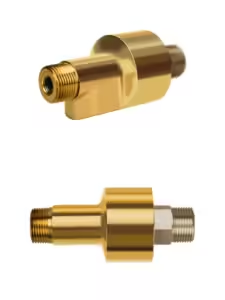









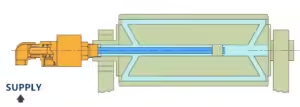



Key Features
Dual Flow Design: The HS Dual Flow Rotating Joint allows for the simultaneous transfer of two different media, enhancing system efficiency and reducing downtime.
High Pressure and Temperature Ratings: Capable of operating at pressures up to 3,625 psi and temperatures reaching 250°F, this joint is built to withstand demanding environments without compromising performance.
Versatile Media Compatibility: Suitable for a wide range of fluids, including water, hydraulic oil, and air, making it adaptable to various applications across industries.
Robust Construction: Crafted from nickel-plated steel or stainless steel, the HS Dual Flow ensures superior corrosion resistance and longevity even in harsh conditions.
 Our seals are on CNC machine tools and special grinding machines. The finished, mirror-like surface makes the seal more reliable, and high-precision rolling bearings are also used to make it rotate smoothly.
Our seals are on CNC machine tools and special grinding machines. The finished, mirror-like surface makes the seal more reliable, and high-precision rolling bearings are also used to make it rotate smoothly.

The HS Dual Flow Rotating Joint is ideal for:
Manufacturing Processes: Perfect for machinery that requires continuous fluid flow during operation.
Hydraulic Systems: Ensures reliable performance in hydraulic applications where dual media transfer is essential.
Cooling Systems: Effectively manages cooling fluids in equipment that operates under high temperatures.

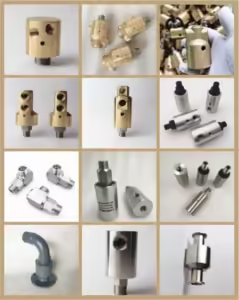
FAQ
What is a Dual Flow Rotary Joint?
A dual flow rotary joint, such as the HS Dual Flow, is a mechanical device that allows for the simultaneous transfer of two different fluids or gases through a single connection. This design enhances efficiency by reducing the need for multiple joints and minimizing potential leak points.
What are the main advantages of using HS Dual Flow Rotary Joints?
The primary advantages include enhanced operational efficiency, compact design for space-saving installations, minimized downtime due to uninterrupted fluid flow, and reduced complexity in system design compared to using separate unions for each medium.
What types of fluids can the HS Dual Flow handle?
The HS Dual Flow is versatile and can handle fluids, including water, hydraulic oils, air and steam. However, compatibility depends on the materials used in the construction of the joint and the specific seals employed.
What are typical pressure and temperature ratings for HS Dual Flow Rotary Joints?
The HS Dual Flow Rotary Joint typically operates at pressures up to 3,625 psi and temperatures reaching 250°F (121°C). These specifications may vary based on the specific model and application requirements.
How does the sealing mechanism work in a Dual Flow Rotary Joint?
The sealing mechanism in a dual flow rotary joint prevents the mixing of two different fluids through carefully designed seals. Advanced sealing technologies enhance reliability and longevity.
What maintenance practices recommended for Dual Flow Rotary Joints?
Regular inspections for wear on seals and bearings are crucial. Keeping the joint clean and ensuring that compatible fluids used can significantly extend its lifespan. Manufacturers often provide guidelines for specific maintenance schedules based on usage conditions.



